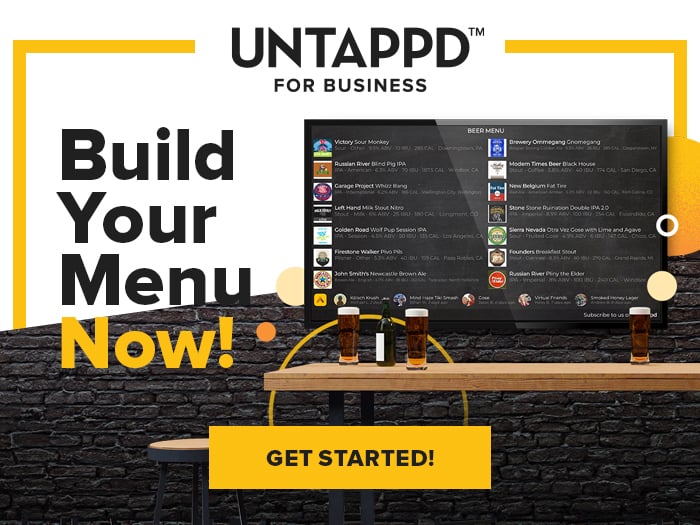The Top Tips for Starting a Brewery in 2024

February 27, 2024
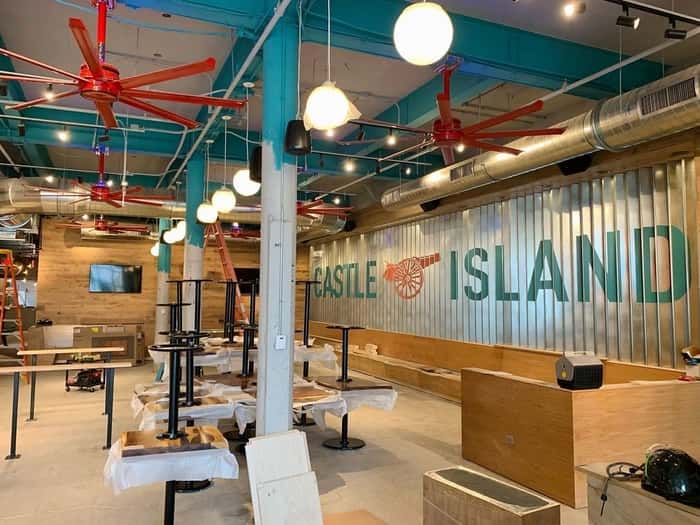
UPDATED: 2/26/2024
Without a doubt the craft beer industry has faced some serious headwinds over the past few years. Overall, the Brewers Association reports that in 2022 the industry has seen "mixed signs of recovery." According to the organization's Year in Beer 2022, there are now 9,500 breweries operating in the United States, with 550+ new ones opening and only 200+ closing in 2022.
With so many breweries in the marketplace, the road to success isn’t the unpaved path it used to be. We’ve seen former financial advisors, consultants, head brewers, and many more all begin their own businesses. But whether you’re looking at a serious career change or a brewer taking the next step, the question remains the same: Where do you begin when figuring out how to start a brewery?
In this comprehensive guide, we’ve laid out all the important considerations and steps you’ll need to take if you’re looking to open your own taproom or production space.
What We’ll Cover in This Piece:
- The Basics: How to Start a Brewery
- How Much Does it Cost To Open a Brewery?
- What Are Some Common Brewery Startup Costs?
- How To Fund a New Brewery
- The First Step: Building Your Brand
- The Second Step: Creating a Business Plan
- The Third Step: Finding a Location
- The Fourth Step: Finding the Right Brewery Equipment
- The Fifth Step: Making It Legal
- The Final Step: Sales Forecasts
- Open the Doors!
The Basics: How to Start a Brewery
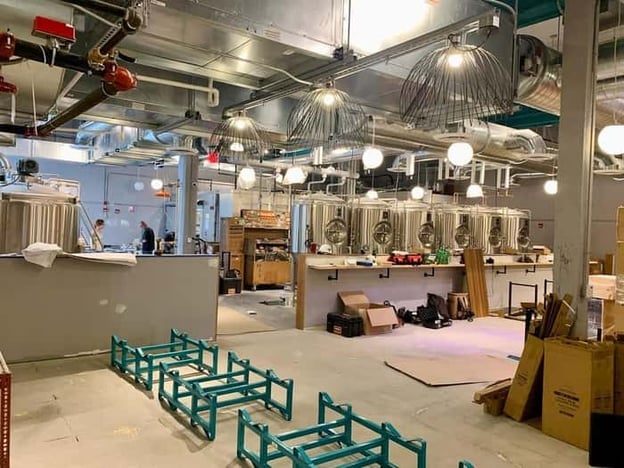
As any business owner will tell you, going out on a limb to create your own establishment is a simultaneously exciting and terrifying prospect. Thankfully, you’re not alone. Many brewery owners before you have successfully opened their own spots and you can join them.
With that in mind, there’s no one-size-fits-all approach. But, while everyone’s experience varies, a few basics stay the same.
Most importantly, you need a solid plan in place before you ever open the doors. You have to find the right balance of your own expertise combined with the skills of your team.
You also need to be flexible. That perfect building you found in the warehouse district of your city? Chances are it’ll need a bunch of permits in order to operate. You’ll need to pass fire inspections. You’ll need to buy a brewer’s permit. All of these processes take time.
“Stay on your toes,” says Adam Romanow, Founder and President of Castle Island Brewing Co. in Norwood, MA. “You might think you’ve planned every eventuality, but you're always surprised. That’s just the reality of opening any new business. Stay nimble, stay spry, and stay focused on opening.”
Romanow started his first production brewery in a suburb of Boston in 2014. But currently, he’s in the middle of opening a new satellite location in South Boston. Although he originally planned to get the space off the ground in 2020, the COVID-19 pandemic changed everything. An original construction timeline of four to five months has extended to ten months.
“Everyone says it’s going to take twice as long and cost twice as much as you think,” says Romanow. “That’s still as true now as it was six years ago when we first opened.”
Down in Miami, Marilyn “Mari” Orozco and her husband Haidar Hachem expressed similar sentiments. The two co-founded Shōjō Beer Co., a nomadic brewery that started in May 2021.
“The way you imagine getting from point A to point B… it just doesn’t happen that way,” says Orozco. “You have to go to A, A and a half, A and three quarters, and then you get to B.”
As Mike Tyson famously said, “Everyone has a plan until they get punched in the mouth.” And more than likely, you’re going to hit bumps in the road. Just look at breweries that tried to open right before the COVID-19 pandemic.
The best thing you can do is roll with the punches.
How Much Does it Cost To Open a Brewery?

When Romanow opened Castle Island six years ago, he had a little over $1.5 million to get the brewery off the ground. In retrospect he calls that a “shoestring budget.”
“In hindsight, if I doubled that and kept the plan the same, that would’ve been a smart move,” says Romanow. “We were really cash strapped for a while at the beginning and fought that for years.”
With the new South Boston taproom, he’s raised over $3 million.
Hachem and Orozco received some simple but crucial advice from one of their good friends at King Fox Brewery in Hialeah, FL.
“He told us to write down everything you think you’re going to pay and then have enough money to buy your equipment, and to pay rent for two years,” says Haidar. “And then, whatever number you have… double that!”
To avoid some of those pricey initial costs, the pair decided to pursue a nomadic brewing model, where they pay to brew using tanks from another brewery.
“We decided to go the route where we gypsy brew first to save a lot of money,” says Hachem. “After we have enough capital, we’ll open a production facility. This way, we don’t have to worry about staffing and things like that. It’s one less cost we have to incur.”
What Are Some Common Brewery Startup Costs?
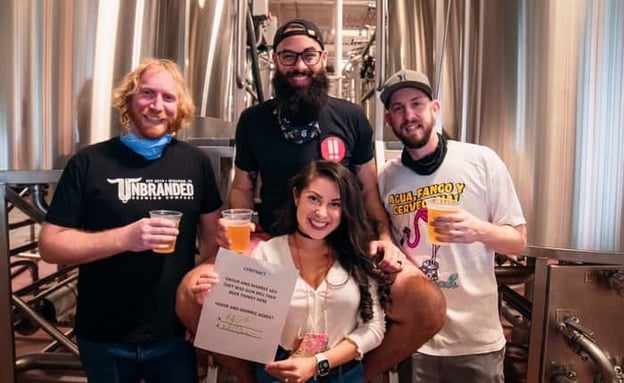
While every brewery has different needs, here are some common startup costs to consider.
Some bigger expenses include:
- Rent
What you need to pay for your specific location. Again, the cost will vary based on what city you're in. For example, rent for a taproom in Topeka, KS, probably won’t cost as much as one in San Francisco, CA, or Brooklyn, NY. And if you want to buy, you’ll need to factor in the cost of the property and decide whether or not you want to take out a mortgage. - Construction
Are you building from the ground up? Outfitting an older space? Or just getting into a turnkey operation? Chances are, you’ll be spending some dough on design to truly make a brewery that reflects your brand and business goals. Those can rack up pretty quickly.
Although Romanow’s new Castle Island location is half the size of the original, he raised twice the money. Part of the reason is because the new project will be in Boston, which has an extremely competitive hospitality scene.
“We have to put our best foot forward,” says Romanow. “We went above and beyond with the design. There is a really high-end finish… A lot of things we didn’t do the first time around because we were tight on cash we wanted to get in place day one in this new facility.” - Utilities
Monthly bills to keep the lights on, water running, etc. - Ingredients
At the most basic level, you can’t make beer without barley, hops, water, and yeast. If you start adding other ingredients -- say, 500 lbs of raspberries -- you’ll further increase the final cost of your beer. If you plan to serve food, you add another dimension. - Brewery Management Software
Most craft breweries begin by using spreadsheets to track recipes, raw materials, and even customers. While this works for most out of the gate, most craft breweries will evolve and need to utilize a brewery management platform to truly find success.
There are many popular options on the market, but Ollie is quickly becoming one of the best options for startup breweries. This affordable platform is perfect for craft breweries of all sizes and its robust set of features helps streamline production and enable more sales. - Salaries
At a brewery, bartenders, brewers, cellarfolk, packaging teams, marketing folks, and others all require hourly or yearly income.
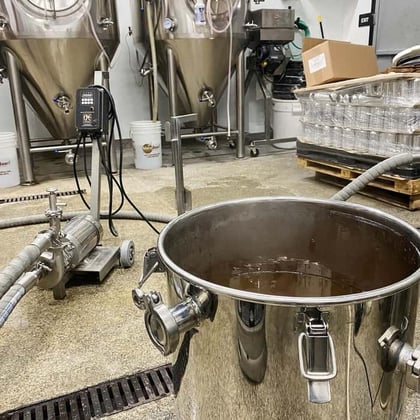
Some smaller expenses include:
- Permits, licensing, and insurance - All are necessary, and all cost some type of fee to obtain. Check with your local Alcohol Beverage Control (ABC) board as well as with the Alcohol and Tobacco Tax and Trade Bureau to figure out these costs.
- Equipment - This could include everything from brewing equipment, bottles, or cans to glasses for the taproom, flight boards, and furniture (see more on equipment under The Fourth Step: Finding the Right Brewery Equipment).
- Technology/software - Hiring a local sales rep? They’ll need some type of sales software to help them sell. Plus, if you have a taproom, you’ll want to look into a point-of-sale (POS) system to help you manage sales. And you’ll need Wi-Fi for your own day-to-day operations -- and for your digitally savvy customers.
- Marketing - One of the most common mistakes new brewery owners make is focusing on just the beer and not the brand. Marketing will help you develop a devoted following and cultivate a community, which will lead to more sales and return patrons. This is the area where you’ll truly need to spend money to make money. Of course, how much you spend is up to you.
Sound like a lot? It is. But there are several ways you can raise the capital to get your dream business off the ground.
How To Fund a New Brewery
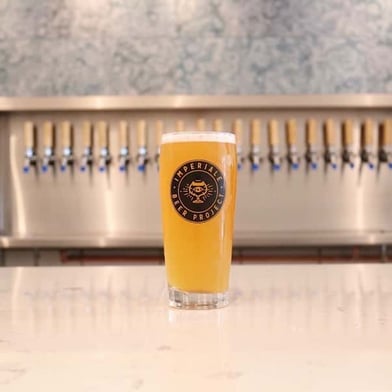
Again, everyone should approach this differently based on the type of operation they’re planning. Are you opening mainly a manufacturing facility? Will there be a taproom? Will you contract brew?
With Castle Island, Romanow went through multiple rounds of funding. First, when they opened the original brewery. Second, when they opened a taproom in the Norwood location. And most recently, when they wanted to fund their South Boston expansion.
According to Romanow, each new round included a mix of equity through a private investor network as well as bank loans. In all rounds, he said Castle Island took money through Small Business Association (SBA) loans, dipping their toe in both the SBA 504 loan program and the 7(a) loan program.
For Brandon Freel and Jessica Walsh, who opened Imperiale Beer Project in Brentwood, CA, at the height of the pandemic in April 2020, bootstrapping was the name of the game.*
Freel and Walsh funded the one hundred percent independently owned Imperiale Beer Project by refinancing their house and selling their bar, which they owned and operated before deciding to start a brewery. They also received a small loan from Brewery Finance, an equipment finance company created specifically to aid American craft breweries, to help cover some of the brewing equipment.
At the moment, Freel says they’re considering additional investment.
“We’re surviving, but it’s been rough, and I want to make sure we see through to the other side,” he says.
Regardless of the variables, creating a realistic structure for how much money you’re planning to spend -- and then doubling or even tripling that number -- will help mitigate problems further down the road.
“The one thing I will say is, have money saved up because you never know what’s going to happen,” says Hachem.
Wherever you are in the planning process, here are the six major things you need to consider when planning a brewery.
*Story Update: Unfortunately, since this story published, Imperiale Beer Project closed its doors in January 2022
The First Step: Building Your Brand


Now that you’ve considered how much you’ll need to start your venture, you need to answer another important question: What is your brand?
The answer here will not only help you solve challenges, but will also dictate pretty much all of your decisions down the road.
The identity and DNA of your brewery is what will attract consumers, help you nail down investments (if you choose to go that way) and develop a loyal following, and ultimately be an expression of yourself and your business partners.
For example, at Shōjō Beer Co., a distinctive brand has guided many of their other business decisions.
Shōjō is built around the yōkai, a class of supernatural entities and spirits from Japanese folklore. Their specific yōkai, a hairy monkey, “drinks and brews mimics Haidar down to a T.”
Orozco continues, saying, “We knew we wanted to have a Japanese aesthetic because we love everything Japanese, but we also wanted to incorporate our cultures as well. We wanted to make the story tie in all together with [Haidar’s] Lebanese background and my Nicaraguan background.”
You’ll find those touches everywhere, from the colors of the Lebanese flag included in Shōjō’s logo to watermelon as a feature in one of their beers, a nod to summers where Haidar remembers eating the fruit outside on the porch with his family in Lebanon.
“We want everything in our brand and our brewery to have meaning and have a fun little story behind it,” says Hachem. “We don’t want to haphazardly throw something out there [and say] hey, look! A beer!”
Castle Island Brewing Co. gets its name from an old military fort in South Boston that’s now a recreation park.
“We’re right on the water, which is the most beautiful place in Boston in my opinion, and a block away from where I’ve lived for the last thirteen years,” says Romanow. “It’s a place very close to my heart and my literal home.”
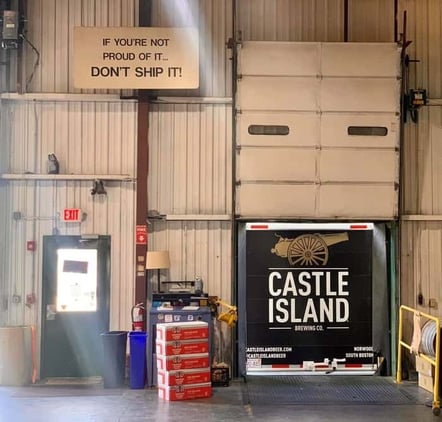
Romanow also says that early on, Castle Island decided to approach the brewery with these three pillars: approachability, inclusivity, and excellence.
“Beer has to be approachable,” he says. “We love innovations, but styles can’t be so esoteric and prices over top push people away. We also believe beer should be inclusive. We make beer… for the person ultra heavy into craft beer or the people just dipping their toes in. And we think beer needs to be high quality.”
All the decisions you make for your brewery will return to how you’ve developed yourself as a brand.
Since this question is so important, we’ve written extensively on some of the crucial components to developing a distinctive brand. Take a look at a couple of the resources below:
- The Best Ways to Develop your Brand and Brewery Logo - Brewing great beer is important, but if you can’t represent the soul of your brewery through branding, no one will understand who you are. With almost 9,000 breweries operating in the United States, you need a unique point of view. Just your beer alone won’t be enough to set you apart.
- How to Find the Best Craft Beer Name - Naming beers is a fun way to speak to your brand and product. Names go a long way to helping you stay consistent with your brand while also being approachable to the customer.
- What Makes a Great Craft Beer Label - You can brew the best hazy IPA on the planet, but if your beer label doesn’t catch the eye of the consumer, your beer won’t stand out on the shelf. Or even make it to the shelf. Put simply: your beer label will determine if someone buys your beer.
- Top Tips for Designing Your Brewery or Restaurant - Conceptualizing your space will continue to visually tell the story of your brewery and represent you as a brand.
Each of the pieces above boils down to one essential point: you need to figure out who you are. What does your company represent? What is your story? Are you loud, fun, and bright? Or are you a bit more serious, thoughtful, and traditional?
While this process can be incredibly challenging, assessing these questions is crucial. In the long run, the answers will guide your entire business approach.
The Second Step: Creating a Business Plan

Once you’ve nailed down your brand identity, you’ll need to write it down. And that, combined with a marketing plan and financials, will form the backbone of your business plan.
A brewery business plan isn’t just for pitching investors or getting a loan. Rather, it’s a personal roadmap so you know exactly what steps you need to take in order to succeed. We’ve written extensively on the best ways to maximize your business plan, but in a nutshell here are the elements of a good brewery business plan.
- Executive Summary
Here, you summarize the entire business plan, meaning you’ll actually write this section last. Focus on your value proposition, concept, and competitive advantage. What makes your brewery attractive to the market? - Business Overview
This section contains all the basic information about your brewery, including the legal name, doing business as (DBA) name, and legal structure. Crafting your vision, mission, and core business values is the first step in defining what makes your brewery unique. - Business (Product) Description
Typically, this section contains most of the nuts and bolts of your brewery: location, size, product offerings, etc. - Market Analysis
Understanding your market demographics, size, and buying trends is paramount to developing a profitable business. Yes, it’s more research. But, overlooking the market and competitive landscape leads to common pitfalls in planning -- and ultimately, your brewery’s success. - Consumer Analysis
Who is your target consumer? Are you going for more affluent, high-end clients or a blue-collar crowd? This section quantitatively and qualitatively outlines your audience. - Competitors
What makes your brewery different from all the other businesses in your neighborhood? Show who your competitors are in your local market, as well as why you’re different. - Sales and Marketing
What will your marketing strategy look like? Think website, social media, other promo materials, costs, etc. - Operations Plan
This is where -- as the adage goes -- the rubber meets the road. An Operations Plan encompasses your licensing plans, team structure, point-of-sale system, suppliers, and anything else related to the day-to-day of your brewery. - Financial Plan
Without question, this is the most important section of your business plan, especially if you’re seeking capital from a bank or investors. Use hard numbers, tables, and data to project revenue, show break-even, and tabulate start-up costs and expenses, especially those associated with your equipment overhead.
A brilliant business plan is the lynchpin to your business. It’ll not only impress investors and encourage investment but demonstrate your understanding of what goes into starting a brewery and show you’ve done your homework.
Beyond locking down outside capital, the business plan will be the bible for your own business decisions moving forward. Although it's the second step here, building a business plan is perhaps the most important stepping stone on your path to creating a successful brewery.
The Third Step: Finding a Location
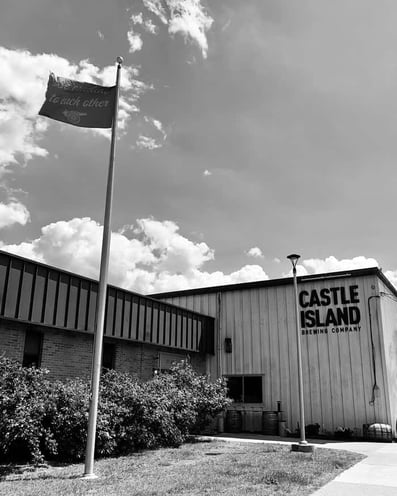
Finding the best location for your brewery depends on the business model you want to run.
“For us, picking a location was more about identifying a building suitable for manufacturing than running a great taproom,” says Romanow, who opened his first location as a production space. “The space had to have high clearance, loading docks, ample electricity, and floor drains. It wasn’t about location, location, location, but that’s very different from the way most people open breweries.”
For Freel and Walsh, the perfect place came by accident.
“We were literally just driving around and came up on this space,” says Walsh. “We snuck in where the fence was kind of blocking it off, checked it out, and said, This is it.”
Freel continues, saying, “We stumbled across our space under construction… the building had just been framed up… I knew from previous experience this was a good time to get in for a brewery because we needed floor drains everywhere. Actually, the city and property owner had been talking about a brewery or a brewpub as a good idea to fill that space, so everything just lined up for it.”
The most important consideration here is to match the location to your purpose.
“Do your research in the area you want to open,” says Walsh. “Look at what the area looks like during the daytime and in the evening. How busy is it? Is it easily accessible? Is it in an industrial area? Are there baseball fields nearby? Are you super out of the way? You need to do the demographic footwork.”
Once you’ve landed on the right space, then you can look at outfitting the inside.
The Fourth Step: Finding the Right Brewery Equipment
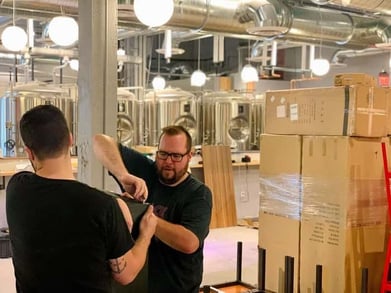
The types of beer you want to brew, how much you want to produce per year, and your space will all inform the type of equipment you buy.
We could probably spend a whole article just talking about equipment. But, to keep it simple, here are the general pieces you’ll need:
- Kegs
- Mash tuns
- Boilers
- Bottling and canning lines - or you could go the mobile canning route
- Cooling systems
- Storage tanks
- Fermenters
- Filters
- Refrigeration
- Cleaning materials
- A draft system
- Waste treatment systems
- Beer labelers
- A point-of-sale (POS) system
Of course the size, amount, and variety of equipment you’ll need will depend on a few variables:
- Space - Square footage will dictate the size and number of mash tuns, fermentors, brite tanks, and other equipment that you buy
- Beer - What type of beer are you brewing? Are you an all-lager brewery? Are you going to make a wide variety of beers? Are you focusing on spontaneous fermentation? All may require their own special sets or pieces of equipment.
- Projected Production - How many barrels of beer do you want to make per year? This will determine the size and capacity of the equipment you buy.
- Brand - New, used, or a specific company you’d like to work with?
Most likely, if you build a completely new system from scratch, your equipment costs will be extremely high. Therefore, if you go this route, the best thing to do is research, research, research. Speak with a variety of vendors, compare and contrast like equipment, and talk to your friends already in the industry for referrals.
The key here is to find a true vendor partner, one that will work with you one hundred percent of the way.
In 2017, when Romanow opened a taproom in the production space in Norwood, he put in a 5bbl pilot system built by SS Brewtech.
“Their quality is great, the engineering is great, and their customer service is great, which is really important,” he says. In fact, SS Brewtech impressed Romanow so much that he called on them again when it came time to build out the brewhouse for the new South Boston locale. It was a good call. When the COVID-19 pandemic hit and Romanow’s construction timeline went haywire, SS Brewtech was willing to keep their equipment housed in its warehouse until Romanow could have it delivered.
“The quality of equipment is obviously important, but we’re lucky to be living in a day and age where most vendors are offering quality equipment,” says Romanow. “The bigger challenge now in any construction project is that there are always surprises. There are always headaches and questions you can’t possibly anticipate from the start. Is your vendor willing to work with you when push comes to shove to work through those challenges together?”
If you don’t feel comfortable relying on a vendor, you could consider a more DIY approach.
Freel built Imperiale Beer Project’s 7bbl system cost effectively by doing most of the construction himself.
“Some people like to go and have a company design a whole system for them… I learned by piecing together our system that we could do it for about half of the price. We initially priced out a 3bbl system with the same fermenters for roughly $90K and then ended up putting our 7bbl system together for about $50k,” he says.
In order to make the project happen, he reached out to people in the industry, looked at message boards to see who was selling equipment, and networked. A year out from construction on Imperiale Beer Project, he found a buddy in Tehachapi, CA, willing to sell his original 3bbl set up for a good deal. He went down and picked up the parts. And even though he didn’t end up using all of them, it's that scrappy thinking that saved Freel and Walsh on their initial equipment costs.
The Fifth Step: Making It Legal
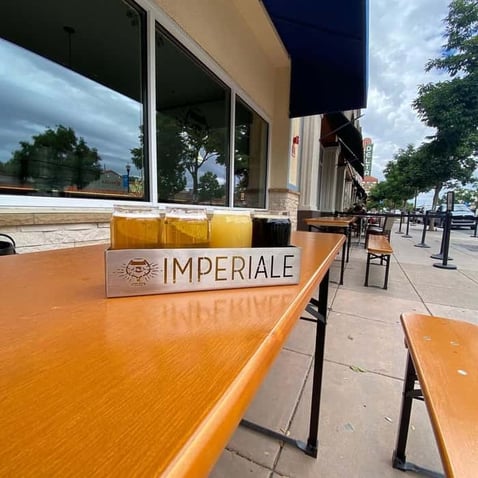
Although this section comes late in the game, it’s one of the most important. In the United States, many local, state, and federal regulations and laws exist that your business needs to follow.
“If I had a dollar for every permit I need to operate this place, I could probably retire,” says Romanow.
More so than any other step in this guide, your legal permits and insurance will be very unique to your brewery.
“There are how many breweries in Boston?” Romanow says. “I asked all of them what they went through and all were helpful, but every experience is so unique based on your location, building, zoning, and more.”
Your best bet? Hire a lawyer to help navigate you through this process. At the very least, you should research the requirements in your area around opening and operating a brewery. You can refer to the Tax and Trade Bureau for Alcohol and Tobacco, your local ABC Board, and the Brewers Association State Laws for more assistance on the exact permits, insurance, and licenses you’ll need to obtain in your specific area.
Generally, you’ll need a couple of basic permits and licenses. As you read this, note that we’re not lawyers, and this guide doesn’t constitute legal advice.
- Federal Brewer’s Permit
This is a federal permit that lets you produce beer and operate a restaurant. - State Liquor License
This allows you to sell alcohol to consumers, so it's pretty important. Since it’s doled out on the state level, each state has its own laws. Find information on your local laws by consulting your ABC (Alcohol Beverage Control) Board. - Brewer’s Bond
Required to make sure that your brewery pays all government and state taxes. - Operating Agreement
Lays out the rules and regulations of the LLC. - Insurance
Lots to cover here from property and casualty to liability. You’ll need to make sure you’re covered in all areas. - Retailer’s License
If you’re looking to sell things other than beer, such as merch, you’ll need this license.
A great piece of advice to consider? If you don’t know, ask.
“From my personal experience, everybody at the ABC, TTB, or any other agency will give you great information as long as you treat them nicely,” says Freel. “If I didn’t know something, I called and said, What do I need to do?”
Once again, please be advised: We are not lawyers. This is just a jumping-off point. Please consult legal advice and refer to the Tax and Trade Bureau for Alcohol and Tobacco, your local ABC Board, and the Brewers Association State Laws for more assistance on the exact permits, insurance, and licenses you’ll need to obtain in your specific area.
The Final Step: Sales Forecasts

You won’t be able to throw the doors open unless you have a viable plan to keep the lights on, meaning you’ll need to set some sales projections.
“People say plan for double, but people don’t think about the cash flow when opening up in the beginning, which is crucial because you don’t know what it’s going to be starting out,” says Walsh. “I would say [plan to] double to triple that for sure.”
Freel and Walsh have had to contend with the ups and downs of traffic flow during a global pandemic along with wildfires nearby polluting the air and temperatures reaching up to 112 degrees during the summer. All of it has caused unpredictable foot traffic.
“Double the money was spot on, but that left us without any working capital when opening up,” says Freel. “Our sales numbers have been fairly decent, but it has been a nightmare to staff and try to guess when people are coming out. There have been so many new factors.”
Calculating sales is a bit of a living, breathing exercise. You won’t be one hundred percent accurate at the start. You’ll need to constantly tweak these numbers to accommodate as you start to understand your market. But overall, you’ll use these numbers to help you secure capital, so they need to be as tight as possible based on what you currently know.
If math isn’t your thing, bring in someone who loves crunching numbers. Brewery consultants and accountants can help you understand how to properly forecast your sales. There is no shame in hiring an expert here. In fact, it’s probably the most responsible thing to do. Knowledgeable consultants and accountants have insider knowledge and can help you navigate common pitfalls of new brewery owners.
Also, don't forget about taking a look at brewery management software.
While many of them focus on back-of-house production, Ollie is a brewery management platform that also delivers tools to help with front-of-house sales and administration. From creating sales forecasts, tracking progress, and even offering a CRM (customer relationship manager), Ollie is the one tool that can not only help you brew your beer, but also sell it.
Open the Doors!

You did it! Sure, it was a long, hard journey with twists and turns along the way, but you’ve made it to the finish line. And weren’t we right? Knowing the basics will help make your dreams come true.
“The first day was amazing,” Freel said. “We sold beer out of the front door… it was hyper local, so it was all of the people we hadn’t seen for eight months during construction and a lot of regulars from our [old] bar.”
Similarly, Hachem and Orozco say the first day they released their beer at Unbranded Brewing was “like a dream.”
“We walked through the doors and, I kid you not, the place was so freakin’ slammed and everyone is just clapping and cheering,” says Orozco. “When I replay it back in my mind… this is the type of stuff you see in the movies. I couldn’t believe it was happening to us.”
Opening your own brewery is an indescribable experience. It’s a choose-your-own-adventure game that’s equal parts terrifying and exciting.
Deciding who you are as a brand, writing a well-thought-out business plan, buying the right equipment, predicting your sales, and making it all legal will give you the best chance to survive and thrive as a beer business.
Follow the pearls of wisdom in this guide, do your research, reach out to your own network, and get ready to be the best brewery owner you can be. Cheers!
Improve Your Brewery Production
Ollie is the platform built by brewers, for brewers™. Increase brewery productivity and sell more beer. Everything you need in one place.
